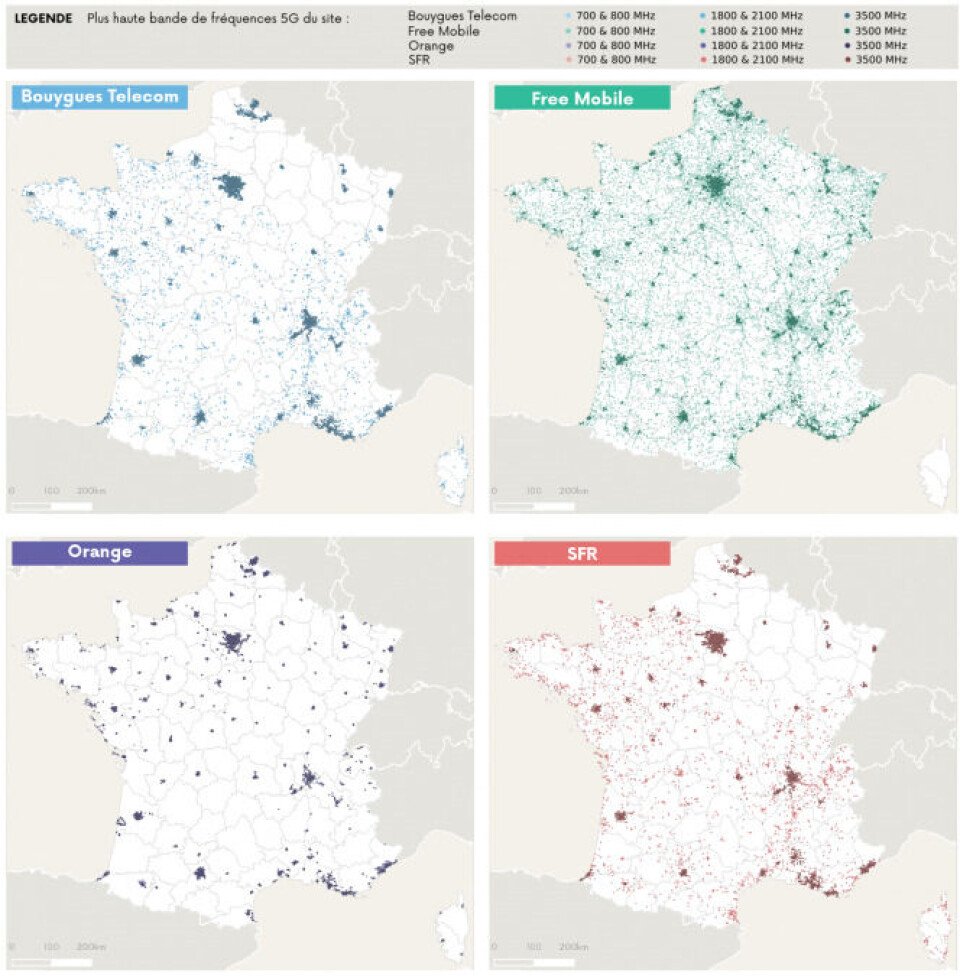-
VPN providers may leave France under pressure from Canal+
The broadcaster is demanding courts order Virtual Private Networks to block access to illegal streams
-
Did you know? Orange also provides internet via satellite to customers in France
Government grants may cover cost of installation
-
3G, 4G, 5G: Is France set to end unlimited internet usage contracts?
The major environmental impact of using data compared to WiFi has sparked debate
Update: Where is 5G in France now and how is the rollout progressing?
Installation of the next generation of mobile internet coverage in all areas of France began in November 2020 and will take around 10 years
By 2030 all of France should be covered by 5G, meaning that mobile internet speeds will be significantly increased around the country.
Four operators are currently in charge of rolling out 5G: Bouygues Telecom, Free, Orange and SFR. That does not mean that other operators cannot offer 5G to their customers, but they will have to use the networks constructed by these four main operators.
The official launching of 5G in France began on November 18, 2020. Progress was hampered slightly by Covid, but data from Arcep, the country’s telecommunications regulator, shows the rollout is on track.
Read more: France’s 5G rollout presents no new risks to health, agency finds
Read more: Snail-pace data, good deal: Which French mobile operator do you use?
The aim is for each of the four main operators to have set up 5G in 3,000 sites by 2022, 8,000 sites by 2024 and 10,500 sites by 2025. At least 25% of these sites must be in “sparsely populated areas and industrial areas, outside the main metropolitan zones,” France’s telecommunications regulatory agency Arcep states.
As you can see in the table below, which shows the rollout as of March 31, 2022 (published in an Arcep report released in June), the four main operators are well on track to meet these objectives.

The table shows three different frequency bands, all three of which are used in the deployment of 5G. For the best possible 5G performance, 5G will use frequencies across several bands, and the 3,500 MHz offers a balance of longer range and higher speeds, so is considered important.
If you want to know more about how 5G frequency bands work you can read this explanation by Nokia (in English). You can also read this simplified explanation of what 5G is published by Le Monde. It is written as if explaining the technology to a child and is in French.
To simplify, for 5G performance to be optimal, it is best for the sites to be equipped with all three frequency bands. The table above shows each operators’ progress in that regard.
The maps below show the sites where 5G has been commercially deployed by each of the four operators.
For a breakdown of the country’s rollout by region, see details on Arcep’s website at this link – scroll down to the very bottom to see the regional breakdowns.

Related articles
Two Catholic monks arrested for setting fire to 5G antenna near Lyon
96% of France now covered by at least one 4G operator
UK summer travellers paid £15m roaming fees in France, Virgin-O2 says
























